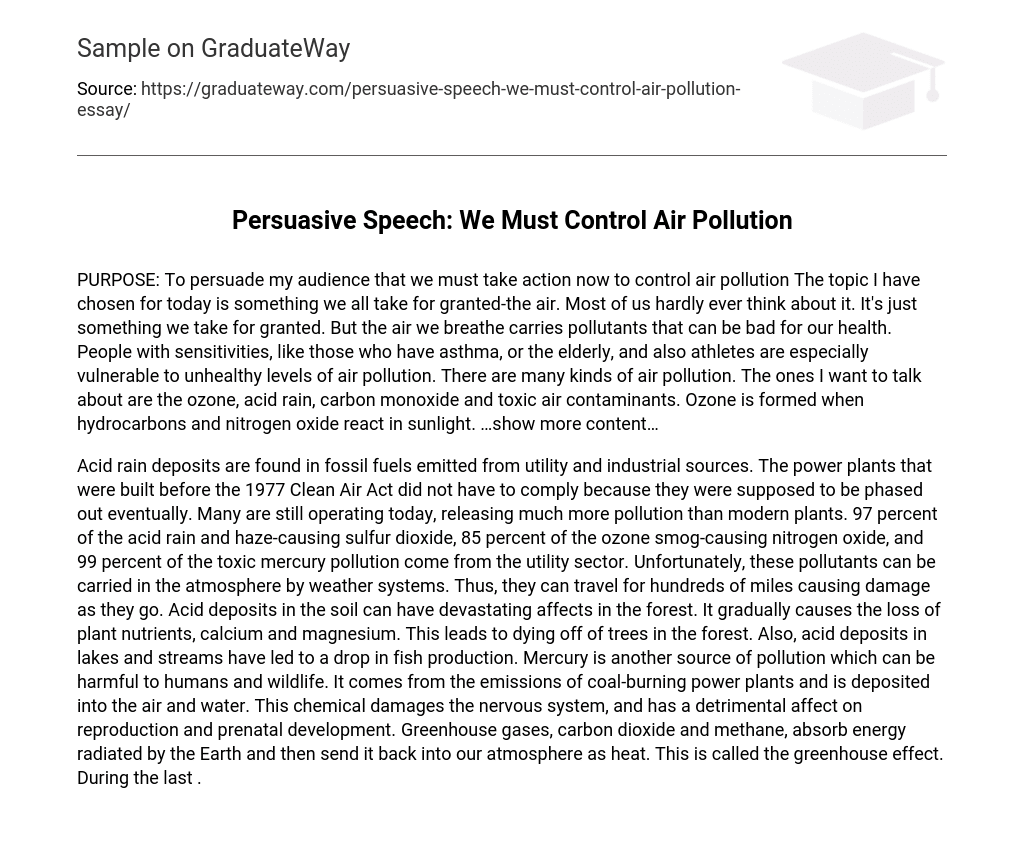Today, attention is directed towards the often overlooked yet constantly presumed existence of air. However, the air we breathe contains harmful pollutants that can put our health at risk. Certain groups, such as asthma sufferers, senior citizens, and athletes, are particularly vulnerable to high levels of air pollution. Different types of air pollution include ozone, acid rain, carbon monoxide, and toxic air contaminants. Ozone is formed when hydrocarbons and nitrogen oxide react in the presence of sunlight.
Acid rain deposits are found in fossil fuels released by utility and industrial sources. Power plants that were built before the 1977 Clean Air Act came into effect were exempted and were supposed to be gradually eliminated. However, many of these plants still operate today, emitting much more pollution than modern plants. The utility sector is accountable for 97% of sulfur dioxide, which leads to acid rain and haze, 85% of nitrogen oxide, which causes ozone smog, and 99% of toxic mercury pollution.
During their journey of hundreds of miles, weather systems have the ability to transport pollutants in the atmosphere. This transportation can cause various forms of damage, including depletion of plant nutrients such as calcium and magnesium. As a result, trees might experience mortality and forests can be severely affected. Acid deposits from these weather systems also contaminate lakes and streams, leading to a decline in fish production. It is important to note that mercury is another pollutant that poses a threat to both humans and wildlife.
Coal-burning power plants release this substance into the air and water, resulting in harm to the nervous system and adverse effects on reproduction and prenatal development. Moreover, greenhouse gases like carbon dioxide and methane absorb energy from the Earth and subsequently emit it back as heat into the atmosphere, a phenomenon referred to as the greenhouse effect.





